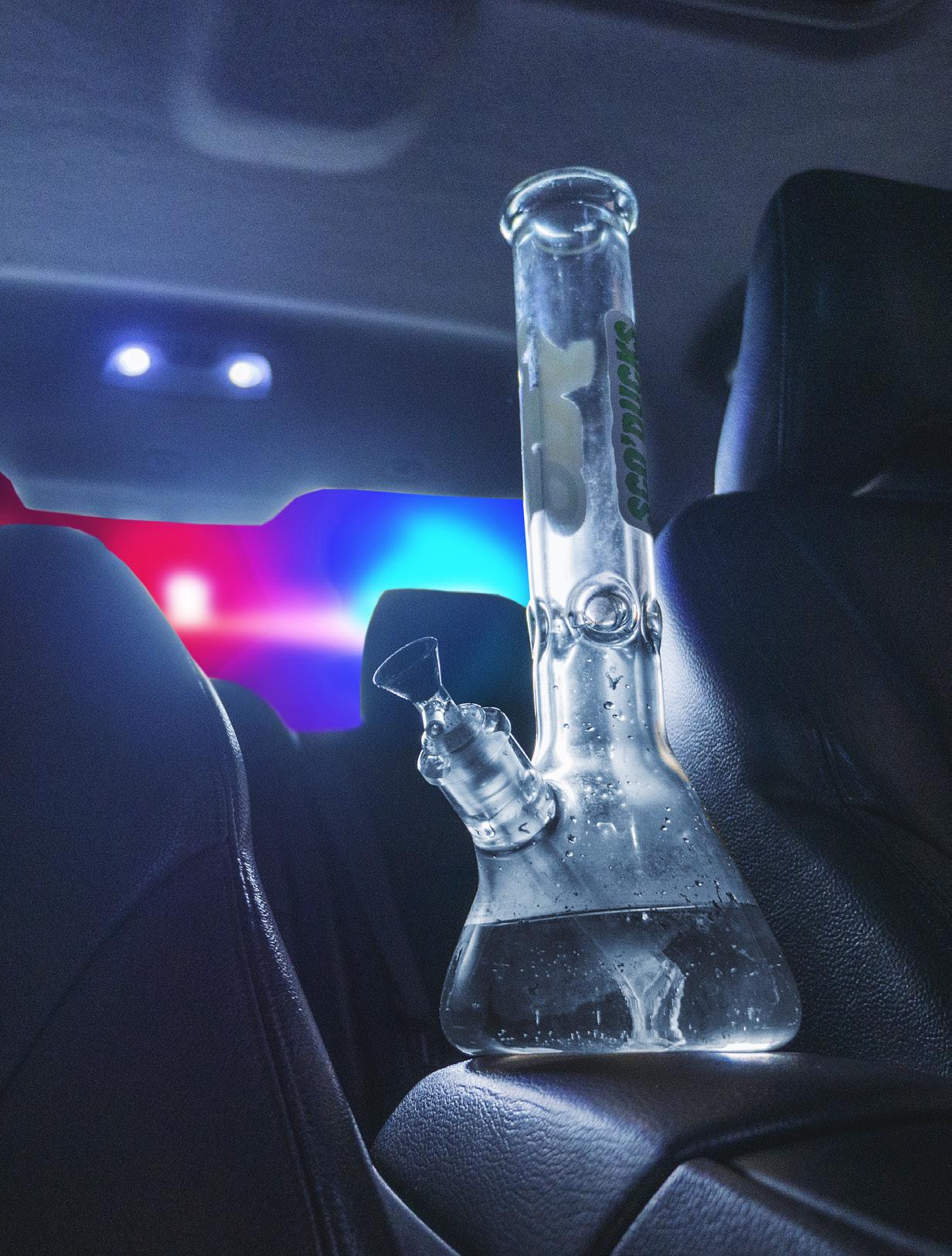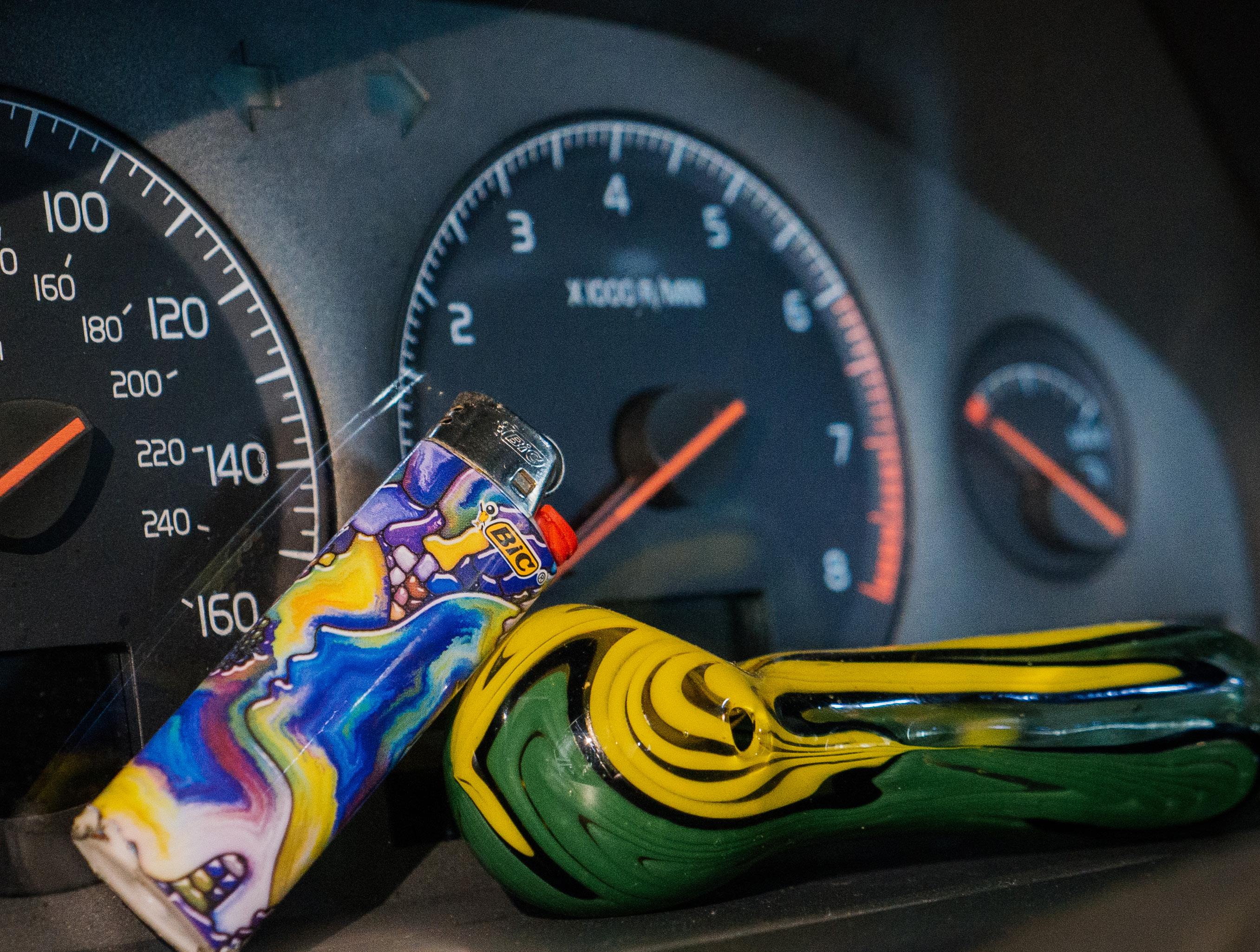
5 minute read
Not So) Dope Driving Laws on driving high
A cop might think someone is under the influence of cannabis and charge them for a DUI if they show signs of distracted driving. Should someone be pulled over after consumption of cannabis (not combined with drinking alcohol), it is likely that the cop caught on to some noticeable signs of distracted driving and decided you were worth investigating. Distracted driving is divided into four categories:
Visual:not looking at the road
Advertisement
Auditory: not listening to the driving environment Manual: touching something other than the steering wheel

Cognitive: zoning out and thinking about something other than driving
Showing these signs can lead to officers believing the driver could be impaired and gives them a reason to pull them over. Further, someone may be pulled over under suspicion of cannabis impairment if they show signs of slow reaction time or impaired coordination. Once pulled over, it is difficult for cops to tell whether or not someone they’ve pulled over has been driving under the influence of cannabis. There is little technology that allows them to test for impairment and nothing that gives them immediate results the way a breathalyzer does for blood alcohol content.
Even though there are those who will claim driving while high makes them “better drivers,” driving should be left only to the absolutely sober in all circumstances. That being said, there is no effective way to tell whether someone smoked two weeks ago or on the day they are pulled over through a drug test. Currently if someone tests positive for THC after being pulled over for a DUI, there is a cause for arrest and charges. If a driver refuses to take a drug test, their license will likely be suspended immediately. The duration of how long a license is suspended is dependent on someone’s driving history.
The officer may ask if the driver would be willing to participate in an examination, and if they agree they will meet with a Drug Recognition Evaluator (DRE). The Drug Recognition Evaluators (DRE) are used in Oregon to determine whether or not someone is under the influence of cannabis. The DREs use a system called the Drug Symptom Matrix which is a chart that contains the general signs of cannabis consumption.
The chart includes indicators such as:
Red Eyes
Marijuana Smell
Body and/or Eyelid Tremors
Relaxed inhibitions
Munchies

Impaired perception of time and distance
Fatigue
Paranoia
Disorientation

The DRE would proceed to look for these signs of cannabis consumption:
Lack of Horizontal Gaze Nystagmus (HGN), or when the eyes cannot follow a pen moving horizontally in front of them
Lack of Vertical Gaze Nystagmus (VGN), or when the eyes cannot follow a pen moving vertically in front of them
Not being able to cross eyes (convergence)
Pupil size and reaction to light
Tetrahydrocannabinol (THC) can stay in the system for weeks. The length THC stays in the body depends on body fat content, and how often THC products are used. These factors make it difficult to tell whether a driver is testing positive for driving under the influence or not.

Always drive completely sober. If you need transportation and cannot drive yourself the University of Oregon offers free nighttime rides home with Safe Ride. Contact number for Safe Ride is (541) 346 - 7433

What’s Up With Vapes? What’s Up With Vapes?
annabis vape pens, nicotine vape oil and nicotine vape pens have been around for less than 10 years, and there has been little research on the safety of inhaling these products. Recently, vaping has caused a lot of fuss within the cannabis industry. Patients have reported variations of symptoms including cough, chest pain, shortness of breath, nausea, vomiting, diarrhea, fever, chills and even weight loss. C Written by Alexandra Arnett
According to the most recent update by the CDC, 2,668 cases of illnesses related to nicotine or cannabis vapes have occurred, with 60 deaths having been reported so far. Among these patients, 1,782 of them reported which substance was being vaped, with 82% reported using THC containing products, while 33% reporting the use of only THC containing products. Of the affected, 50% reported where their product was sourced, with 16% having obtained them from retail businesses and 78% obtaining them from friends, online, or other dealers.
The CDC reported that in 51 samples of lung fluid from those with a vape-related illness across 10 different states, 48 were found to have vitamin E acetate. While vitamin E acetate has been associated with vaperelated illnesses, the CDC notes that there is not enough evidence to say it is the only chemical that should be of concern. The FDA states that vape injury cases are not affiliated with any single brand and more research is needed.
Photographed by Nina Compeau
Many states have taken action by banning the sale of cannabis and/or nicotine vapes. Our own state of Oregon enacted a temporary six-month ban on Oct.4, on the sale of all flavored vapes, both for cannabis and nicotine. However, an Oregon court of appeals established a pause on the ban on Nov.15 that is stated to last 60 days. As of Feb.5, no ban on flavored vapes is in place. Places such as New York, Michigan and Montana also made attempts at banning the sale of vape pens, but they were also blocked by the courts. Massachusetts, Rhode Island and Washington all put in place temporary bans that are set to expire soon. San Francisco has banned all sales of nicotine e-cigarette products. After this, several states, including Oregon, have banned adding substances such as Vitamin E acetate into vapes, as well as implemented more testing requirements to look for this substance.
So how valid is this “vaping crisis?” We know that cannabis, specifically the terpene pinene and the cannabinoid THC, are both bronchodilators, meaning they help open up the airways to the lungs and may even help with conditions such as Chronic Obstructive Pulmonary Disease (COPD) and asthma. What we don’t know is how the various extraction solvents, namely hydrocarbons such as butane, propane and hexane, along with other common additives, affect our lung health.








